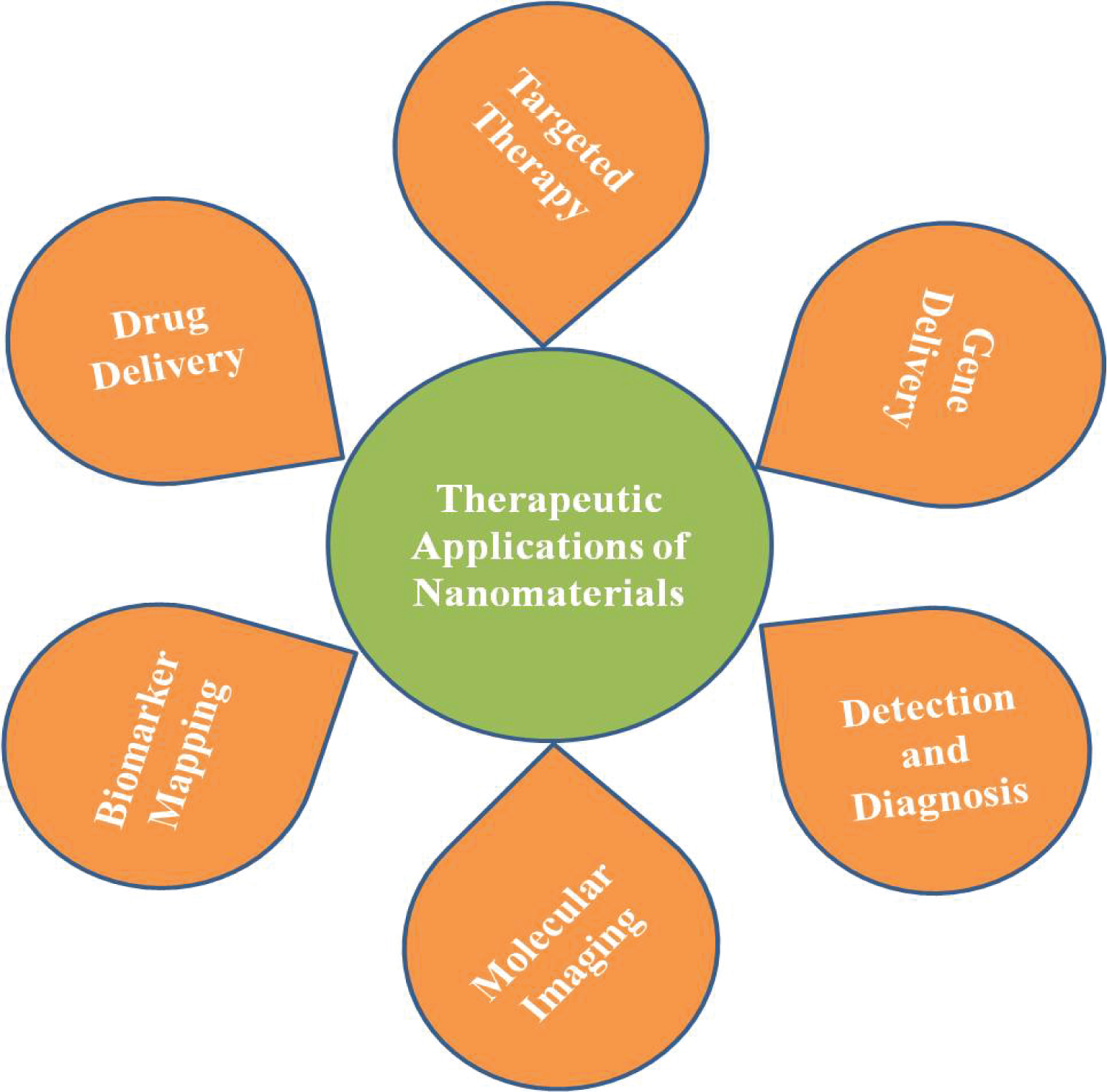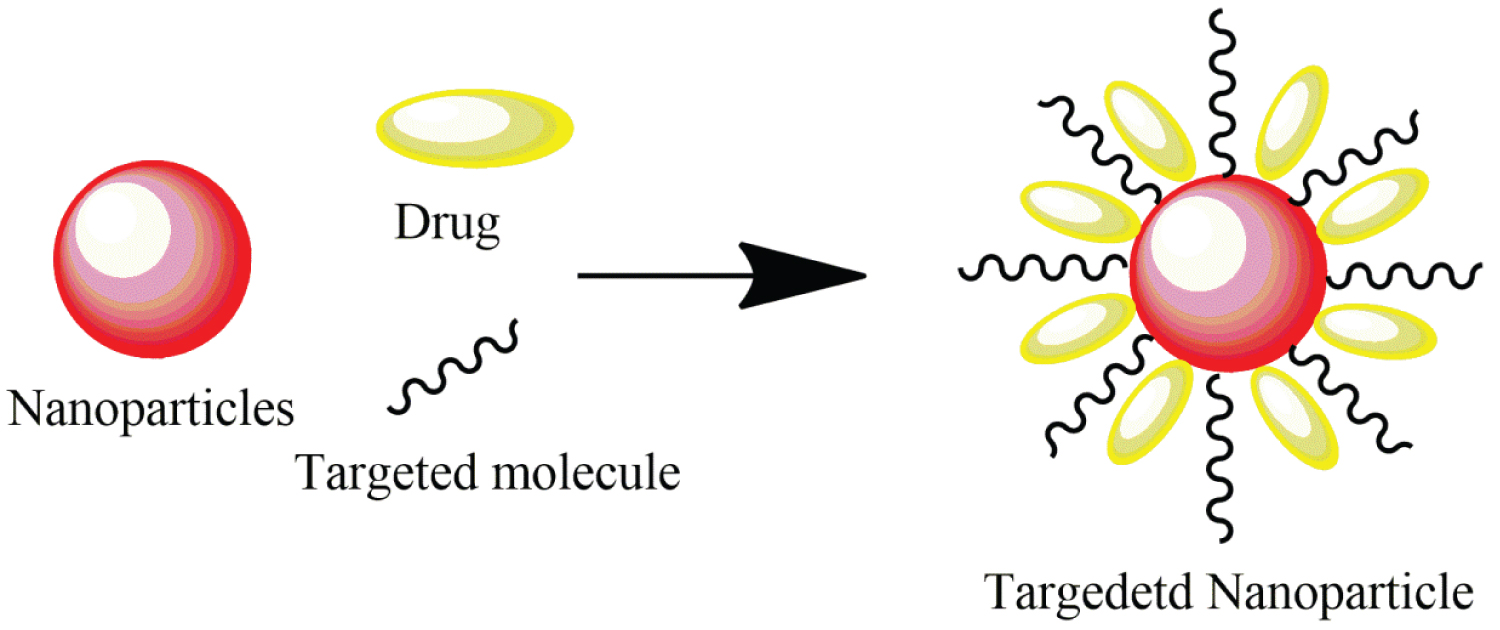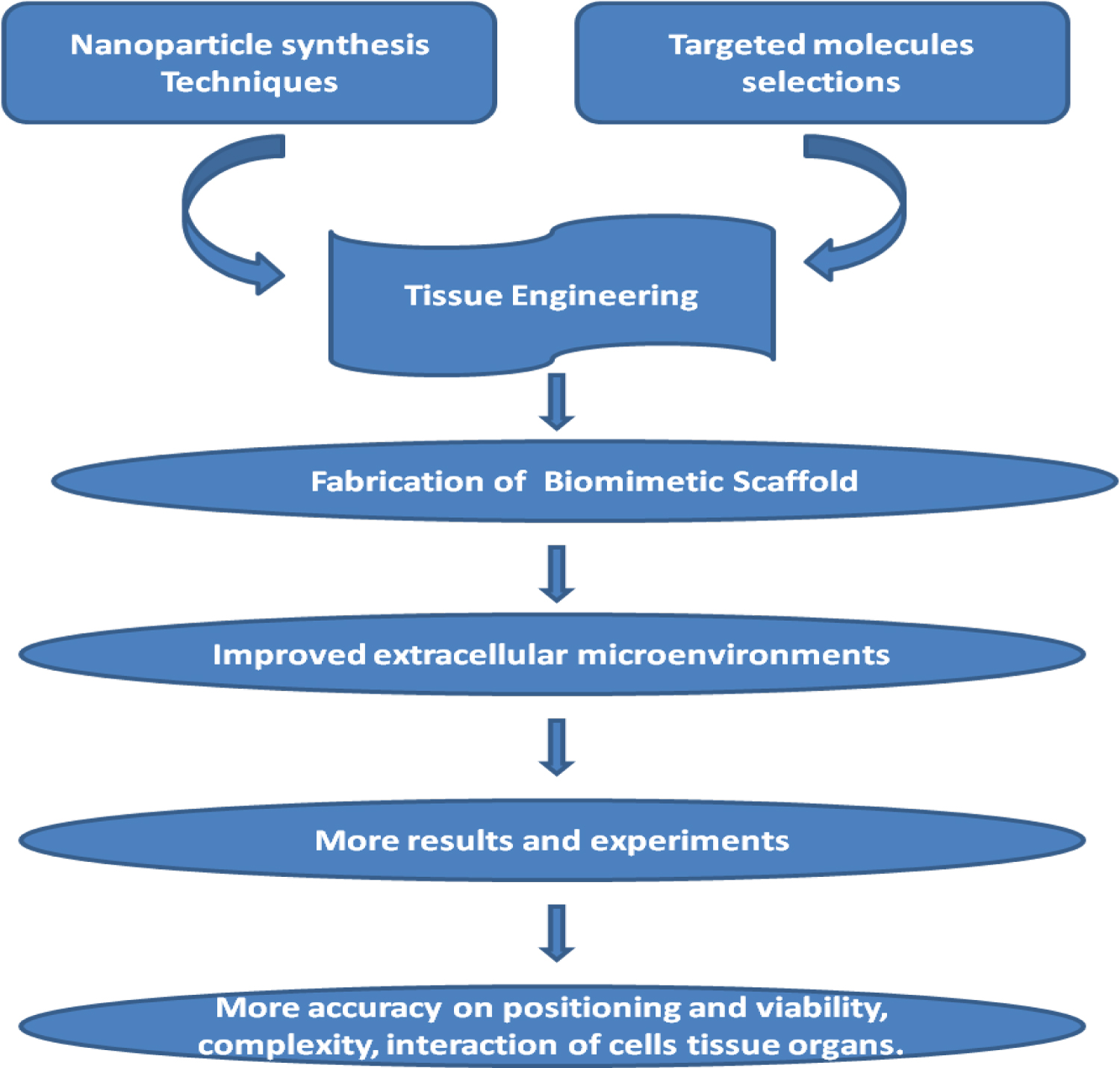The provision of healthcare, which is a fundamental human right, has frequently been the subject of cutting-edge technology development. The availability of high-quality, timely, acceptable, and reasonably priced healthcare has greatly benefited from technological advancement. A new generation of nanostructures has emerged as a result of developments in nanoscience. They each have a distinct set of characteristics that contribute to their amazing uses. Since its debut, nanotechnology has had an ongoing impact on healthcare and has had a significant impact on its transformation, which has led to better results. Nanotechnology has advanced around the globe during the past two decades, and the process has been sped up by intensive study across many healthcare industries. Nanomedicine is the application of nanotechnology and related nanocarriers and nanosystems in medicine. It has proven to be extremely useful in illness detection, diagnosis, and therapy. Different nanosystems have been shown to make superior theranostic candidates than traditional ones. This review will provide an overview of medically relevant nanosystems, their uses, and their drawbacks in the fields of gene therapy, targeted medication delivery, cancer treatment, and other genetic illnesses. Despite having enormous potential, nanotechnology has not yet been fully utilized. To quickly transform the healthcare industry, more work needs to be put into overcoming these constraints and maximizing its potential.
Nanomedicine, Therapeutics, Health care, Cancer, Drug delivery
Nanotechnology is a novel logical methodology that includes materials and types of gear fit for controlling physical just as synthetic properties of a substance at sub-atomic levels. Then again, biotechnology utilizes the information and systems of science to control sub-atomic, hereditary, and cell procedures to create items and benefits and is utilized in differing fields from medication to farming [1]. The disclosure of the new properties of nanomaterials and the improvement of new science on nanomaterials lead to the new nanoscience and nanotechnology. The new rising nanotechnology can impact and affect wellbeing. The positive and negative effects can be seen. While the utilization of innovation can help advance creatures and human great well-being, the undesirable antagonistic impacts of the new nanotechnology are likewise watched. Numerous investigations referenced the need to worry about nanotechnology and its wellbeing health. The creature may be coincidentally presented with nanomaterial or people may deliberately put the nanomaterial into the creature. Preferences and drawbacks of nanomaterial on creature wellbeing can be expected. The utilization of nanotechnology for creature illness executives is conceivable. The utilization of nanotechnology can be found in a few fields including medication. There are numerous new indicative devices dependent on the new nanotechnology. For treatment, there are numerous new medications created dependent on nanotechnology. At present, with the utilization of innovation, for example, electrochemiluminescence, the estimation of the substance at the nano level is possible [2]. At present, the instances of accessible nanoprobes are quantum dabs, plasmonic nanoparticles, magnetic nanoparticles, nanotubes, nanowires, and multifunctional nanomaterials. The bit of leeway in the analysis of nanoprobes is because of the high volume/surface proportion, surface tolerability, multifunctionality, and natural properties [3,4]. The applied nanotechnologies are now utilized for the advancement of new medications. This is the approach to pharmaceutical innovation. Quickly, nanotechnology can help improve medicate definition and conveyance in the body. Furthermore, nanotechnology can help to focus on a particular restorative objective [5]. Nowadays, as science and innovation have advanced, in the physical sciences space, the term 'nano' alludes to materials with dimensionality littler than 100 nm, while in the biomedicine field 'nano' is utilized to portray any item with measurements somewhere in the range of 250 and 750 nm [6]. Nano-biomaterials, nano-medication, and nano-bio-interface are terms utilized reciprocally to signify instruments, advances, and disclosures of nanotechnology that are used in medicine. Some nanoparticles and nanodevices have been as of now endorsed by the Nourishment and Medication Organization or are in cutting-edge clinical preliminaries. For example, superparamagnetic nanoparticles to identify metastatic lymph hub contribution in an assortment of strong tumors [7], egg whites nanoparticles bearing paclitaxel for the metastatic bosom disease [8], or new gadgets consolidating microfluidics and nanosensors are being examined for the location of circling tumor cells and biomarkers from fringe blood [9]. Inorganic nanomaterials have gained huge ground in the clinical field, including malignant growth treatment, imaging, medicate conveyance, and delicate tissue fix and recovery. Inorganic nanomaterials have been utilized for improving immature microorganism engraftment in cell treatment, the mechanical strength of materials in tissue fix, electrical conductivity in nerve, cardiovascular recovery, and antibacterial action in wound dressings. These nanomaterials have additionally been utilized to improve or supplant basic careful materials and reestablish usefulness to harmed tissue [10]. Noble metal nanoparticles have picked up ubiquity because of their particular highlights [11]. Ongoing use of therapeutic plants includes the green union of metal nanoparticles utilizing plant removes as decreasing specialists [12]. The organization of medication stacked nanoparticles by inward breath course is being abused far and wide for the conveyance of chemotherapeutics [13,14], insulin, proteins and peptides, anti-infection agents, vaccines, etc. [15]. Inhalable nanoparticles have been a helpful methodology for foundational tranquilizing conveyance, for example, in tormenting the executives, the cerebrum focused on medicate conveyance, just as treatment of lung explicit sicknesses [16]. The best effects of nanotechnology are occurring with regard to social insurance and medication and this field of nanotechnology is, for the most part, alluded to as nanomedicine and in some cases comprehensively called bionanotechnology. Both private and open research endeavors overall are creating nano items planned for improving social insurance and propelling clinical research [17]. Figure 1 illustrates the therapeutic medical application of nanomaterials.
 Figure 1: Biomedical application of nanotherapeutics.
View Figure 1
Figure 1: Biomedical application of nanotherapeutics.
View Figure 1
The use of nanotechnology in the screening, finding, and treatment of infection, known as nanomedicine is a developing field that can change individual and aggregate human services in the 21st century [18]. In medication, applied nanotechnology is the new applied clinical innovation. Nanomedicine is the particular medication subject covering the guideline of nanomedical science and nanomedical innovation. It tends to be applied in a few different ways of medication from conclusion to treatment. To begin with, nanomedicine can manage the analysis. There are numerous new demonstrative devices dependent on the new nanotechnology. For treatment, there are numerous new medications created dependent on nanotechnology. Likewise, nanotechnology can be applied for counteraction reasons in medication. Numerous new immunizations are ongoingly evolved dependent on new nanotechnology [2].
Irresistible maladies are primarily brought about by pathogenic microorganisms including infections, growths, microscopic organisms, and parasites that profoundly affect mankind in light of their one-of-a-kind attributes, for example, the capacity to quickly duplicate in number, unconventionality, and transformative advantage [19,20]. The ordinary conclusion systems incorporate culture and microscopy, immunology, just as the polymerase chain response (PCR) strategies [21,22]. These procedures have essentially added to the finding of irresistible illnesses and enormously advanced the counteraction and treatment for different irresistible diseases. Different immunology-based techniques have been produced for the analysis of irresistible infections, including compound connected immunosorbent test (ELISA), fluorescent immunoassays, attractive immunoassays, radio-immunoassays (RIA), sidelong stream immunoassays, etc. For example, the protein immunoassays, trailed by Western smudge systems to recognize the immunoglobulin M antibodies in the serum from patients, have been utilized as a momentum best quality level for HIV diagnosis [23]. Currently, the majority of the nano diagnostic applications are centered around the identification of pathogens in irresistible illnesses and malignant growth biomarkers in disease therapy [24].
There are many nanoparticles, particularly fluorescent nanoparticles, metallic. There are numerous nanoparticles, especially fluorescent nanoparticles, metallic nanoparticles, and attractive nanoparticles, which have been effectively used for the analysis of irresistible maladies. Fluorescent nanoparticles are touchy and photostable fluorescent tests that can be utilized to mark a wide range of natural targets. They have been exhibited as new techniques to perform ailment analysis continuously through bioimaging or detecting exercises. Quantum spots are semiconductor-based fluorescent nanostructures with a size of around 1-10 nm, which have numerous novel properties, for example, photostability, high quantum yield, and brightness [25]. The most utilized metallic nanoparticles in the conclusion applications are gold and silver nanoparticles. These metallic nanoparticles could produce extraordinary retention when energized with electromagnetic radiation [26]. The gold nanoparticles are the first nanomaterials as nanodiagnostics for the recognition of DNA in 1996 [27].
Lanthanide luminescence nanothermometers (LNTs) produce minute, extremely sensitive, and detectable optical signals for reporting temperature information, which is particularly beneficial in biomedicine to ensure reliable treatment and diagnosis [28]. Due to their distinctive optical characteristics, such as a large Stokes shift, spectrally sharp luminescence emissions, long luminescence lifetimes, and excellent photostability, lanthanide-doped luminescent nanoparticles with excitation and/or emission in the NIR range have recently attracted a lot of attention as one of the top candidates for noninvasive biological applications. Applications of biophotonics are also covered, demonstrating its superiority in high-resolution imaging, single-nanoparticle-level detection, and effectiveness in tissue-penetrating diagnostics and therapies [29]. The Luminescent ratiometric nanosensor for detecting nitric oxide (NO) in the different biological fluids, living cells, and tissues by using the optical features of upconversion nanoparticles. This nanoconjugate is made up of a UCNP core that exhibits two distinct fluorescence emission peaks at 540 and 656 nm as the upconversion fluorophore, NO-reactive molecules derived from rhodamine B (RdMs) that are enclosed in the mesopores of the mSiO2 shell, and a layer of -cyclodextrin (CD) on the outside of the particle [30].
The advancement of similar objective enhancement techniques for proteins could considerably improve clinical diagnostics and the creating field of proteomics [31,32]. Albeit one can't yet synthetically copy protein targets, it is conceivable to label such focuses with oligonucleotide markers that can be consequently enhanced with PCR and afterward use DNA discovery to recognize the objective of intrigue [33,34]. This methodology, frequently alluded to as immuno-PCR, permits the recognition of proteins with DNA markers in a wide range of organizations. Proteins are a significant piece of the cell's language, hardware, and structure, and understanding their functionalities is critical for additional advancement in human prosperity. Gold nanoparticles are generally utilized in immunohistochemistry to distinguish protein-protein collaboration [35].
Au nanoprobes conjugated with fluorescein-hyaluronic acid (HA) conjugates are manufactured and used for monitoring intracellular reactive oxygen species (ROS) accumulation in living cells via NP surface energy transfer. To ensure intracellular stability against glutathione and enable quick and precise detection of intracellular ROS by producing strong fluorescence-recovery signals, HA is firmly end-immobilized onto the surface of AuNPs using the adhesive molecule dopamine [36].
Mirkin's team, which also invented the nanoparticle-based bio-barcode for ultra-sensitive protein identification, improved in developing the self-assembly of DNA on gold nanoparticles [37]. They co-immobilized DNA and a signal-antibody on the surface of gold nanoparticles in this detecting device to boost the signal. Then, a single target protein binding can deliver a gold nanoparticle coupled with antibodies and DNAs after the double-antibody sandwich complex is developed. Then, with a detection limit of 30 aM concentration, very sensitive protein detection was accomplished by detecting the significant amount of DNA released from the gold nanoparticle. Thus, the identification of many DNA sequences may be accomplished via a protein binding event. They subsequently used it for the sensitive detection of HIV-1 p24 Gag protein based on the original approach [38].
Organic particles, for example, deoxyribonucleic corrosive (DNA) have indicated incredible potential in the manufacture and development of nanostructures and devices. It is the fundamental structure square of life. Most inherited data is encoded in the substance language of DNA and replicated in many cells of living organisms [39].
Immunological naming strategies have additionally been applied to the division of explicit kinds of cells. Cells named with fluorescent antibodies or fluorescent immune microspheres have been isolated from unlabeled cells by fluorescence-initiated cell arranging [40,41]. Cells explicitly named with these reagents have been isolated from unlabeled cells based on their maintenance in attractive fields [42].
As of late imaging has been generally utilized in both bio-and clinical imaging because of its intuitional interface to empower early recognition and conclusion of maladies. Specialized advances in nanotechnology are making novel classes of X-ray differentiate upgrading operators. X-ray is nonionizing and has a more extensive demonstrative scope of identification, taking into consideration both physiological and metabolic investigations [43]. Nanoparticles with potential X-ray-related clinical applications involve different materials, for example, metals (gold, silver, and cobalt) or metal oxides (Fe3O4, TiO2, and SiO2). Traditional anatomical imaging strategies commonly identify malignant growths when they are scarcely any millimeters (e.g., MRI) [44]. The potential kinds of superparamagnetic particles (SMP) have been assessed dependent on the size in numerous preclinical and clinical preliminaries, including (I) micrometer-sized paramagnetic iron oxide (MPIO, micron size), (II) superparamagnetic iron oxide (SPIO, nanometric size) that for the most part is utilized for the finding of hepatic infections and tumor discovery and (III) ultra small superparamagnetic iron oxide (USPIO, < 50 nm) that for the most part are profoundly helpful for blood pool imaging and angiography [45].
Nanoparticles utilized as medication conveyance vehicles are by and large < 100 nm, in any event, one measurement, and comprise various biodegradable materials, for example, regular or manufactured polymers, lipids, or metals. Nanoparticles are taken up by cells more proficiently than bigger macromolecules and in this manner, could be utilized as successful vehicle and conveyance systems [46]. Nanotechnological forms including restorative plants have picked up the focal point of analysts, who have built up a few imaginative conveyance frameworks, including polymeric nanoparticles. These materials, produced using biodegradable and biocompatible polymers, speak to a possibility for controlled medication conveyance. Polymeric nanoparticles are a promising definition utilized for medicating conveyance frameworks since they can be targeted [47,48].
Nanoparticles can be utilized in focused medication conveyance at the site of infection to improve the take-up of inadequately solvent medications [49,50], the focus of medications to a particular site, and medication bioavailability. A schematic correlation of targeted and focused on medicating conveyance frameworks have appeared in Figure 2.
 Figure 2: Targeted drug delivery by nanocomposites.
View Figure 2
Figure 2: Targeted drug delivery by nanocomposites.
View Figure 2
The medication ties to the cytoplasmic receptors and the ensuing medication receptor complex are shipped to the core bringing about the outflow of specific qualities that control cell multiplication [51]. DDSs can be built by direct conjugation with the medications and further surface adjustments can prompt a superior conveyance for such frameworks, elevating a focus on conveyance to explicit kinds of cells and arriving at cell compartments, for example, core and mitochondria [52,53]. Quality treatment like gene therapy and RNA Interference (RNAi), the two latest and prominent treatments, hold extraordinary guarantee as treatment and anticipation techniques for different diseases [54,55].
There are a few advantages of utilizing small-scale and nanofabrication techniques for tissue designing (Figure 3). Nanotechnology can be utilized to create nanofibers, nanopatterns and controlled-release nanoparticles with applications in tissue building, for copying local tissues since biomaterials to be designed are of nanometre size like extracellular liquids, bone marrow, heart tissues, etc [56].
 Figure 3: Nanofabrication techniques for tissue designing.
View Figure 3
Figure 3: Nanofabrication techniques for tissue designing.
View Figure 3
Thermal ablation is used in cancer treatment to eliminate damaged cells or tissue by Implicating external electromagnetic waves and elevated heat. Thermal ablation techniques utilize radiofrequency, microwave frequency, and cryoablation, and are focused on ultrasound (US) and laser light [57,58].
Heat as thermal ablation has been explored by many researchers in cancer. The challenge of this therapy is surgery: The tumor needs to be completely destructed as possible, while not harming normal tissues. Thermoablation is a topic of high interest with the application of electromagnetic heating. Generally, hyperthermia with mild temperatures increases the destruction of cancer cells with chemotherapy, but not that of normal cells (i.e., chemotherapeutic side effects are minimized) [59,60].
The temperature of lesions is often maintained at 42-45 °C or even higher using photothermal treatment (PTT), which now uses the same temperature definition as conventional thermal therapy. Utilization of photothermal material and temperature-feedback upconversion nanoparticles for real-time monitoring of microscopic temperature in PTT. While the temperature of lesions is still low enough to avoid damage to living tissue, we see that the microscopic temperature of photothermal material upon irradiation is high enough to kill cancer cells [61]. This problem could be resolved by combining mild hyperthermia (42 °C) with treatment. Here, a new transition metal dichalcogenides nanostructure called Bi2Se3/MoSe2 nanosensor (BMNSs) was developed to enhance the overall anticancer efficiency by inducing moderate photo-hyperthermia (mPTT). The Bi2Se3 hexagonal nanoplates that made up the BMNSs were uniformly coated in MoSe2 nanosheets. The Bi2Se3 substrates offered a large specific surface area to bind additional doxorubicin (DOX) molecules as a chemotherapeutic drug, while the MoSe2 moiety gave the nano platform outstanding photothermal effectiveness. The tumor-specific drug release and the improved chemotherapy may be achieved under the stimulation of mPTT/tumor acidic microenvironment, demonstrating remarkable therapeutic potential against 4T1 cells [62].
In the current scenario, patents and research publication is the shaping the nano-biosciences market. Targeted drug delivery and in vitro diagnostic patent applications are increasing by up to 60% in 2020 [63]. Nano diagnostics and nanosensors ate promising technology in health care. Pharmaceutical manufacturing is well established and they are optimizing the nanoparticle-based drug delivery technology. Nanotechnology can solve all the issues regarding drug delivery therefore this sector is increasing startup. The drug delivery division treats like any other pharmaceutical product and similar investments for drug development. Along this concern arises from animal studies, the results of which suggested that nanomaterials such as carbon nanotubes and nanofibers may cause detrimental pulmonary effects, such as pulmonary fibrosis. Further possible health risks are ingestion exposure and dust explosion hazards.
Nanomedicines are the current and future therapeutics approach to human welfare. Different drug delivery systems and targeted nanocomposites are developed for health care. Synthesizing a nanoparticle according to our needs for biosensors and other diagnostic is a great achievement in our health care system. In this review, we discussed various technologies and methods based on nanocomposites for diagnosis and treatment.